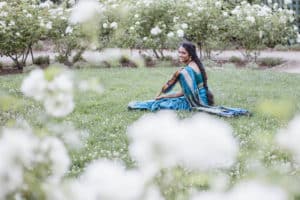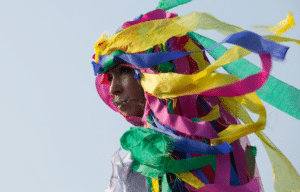It gives us great joy to announce the 2021 round of Creative Work Fund grants.
Artists saw many expected opportunities to create and earn slip away over the course of the pandemic. That makes the awarding of 25 grants, totaling $1.1 million — more than in any prior year — cause for extra celebration. As always, Creative Work Fund grants help artists develop new works made in collaboration with nonprofit organizations.
We invite you to read the full grant announcement and review the list of grantees here.
This year; these projects
Many of the projects selected in 2021 explore the urgent stories that emerged over the course of the pandemic. Those include the experiences of both Latinx domestic workers and Latinx migrant workers in San Francisco’s Mission District. These communities suffered dramatically high rates of COVID-19 infections. This threat to life and well-being came on top of endemic racism, including people of the same or similar ethnicities discriminating against people in their communities with darker skin, and the particular challenges that emerging Black artists face.

Other artists will use Creative Work Fund grants to draw attention to the destruction of habitats due to pollution, development, and global warming. These urgencies will be explored through a new hip-hop album about the San Francisco Bay, a Kathak dance and dance film about pollution of sacred rivers in India, and an immersive, interactive sound installation about the high desert of the Southwest U.S.
COVID-19 lockdowns aggravated Post Traumatic Stress Disorder (PTSD) and increased incidents of domestic violence. One 2021 Creative Work Fund project will introduce individuals with PTSD to new modes of movement therapy and gather choreographic ideas from them. Another will feature meticulously sewn and adorned wedding dresses that feature quotes from clients in therapy following domestic violence.
For many, living through the pandemic altered the sense of passing time. Home came to represent both sanctuary and safety and containment and frustration. Artists had to step back from frenetic creation, presentation, and touring to face illness, loss, and grief. The group of 2021 applicants acknowledged this moment’s uncertainties — allowing themselves longer timelines, deeper investments in process, and pauses to document and archive lessons learned. Two projects specifically investigate time. In one, the artist explores how time may be experienced differently by individuals with disabilities. Another piece, informed by data from multi-chromatic light sensors hosted on window sills across the world, looks at how time may be observed in domestic settings.

Artists challenge themselves to produce artworks around limitations in money, space, time, and materials. In one 2021 project, a sculptor and composer will begin the work of creating “queer objects” out of thrift store finds. Others will make creative use of tools and approaches they developed while in isolation. Two composers will implement techniques they refined while unable to collaborate in person.
We are thankful for the life-affirming creativity and profound social critique embedded in these projects and in all of the 2021 applications.
Looking Back
Each year, and particularly in this one, it is gratifying to celebrate the full scope of the history of the Creative Work Fund. In the early 1990s, this initiative was designed to defy the rhetoric of that era’s culture wars. It asserted that artists were worthy of philanthropic support, that they should be funded to produce artworks, and that their work had value in many contexts.
With the 2021 cohort included, the Creative Work Fund has awarded 414 grants totaling $15.4 million. The maximum grant size has grown from $35,000 to $45,000, and the average amount paid to lead artists has risen from a little over $10,000 to the $17,788 that is projected for 2021.
Over the years, the Creative Work Fund made two significant changes in who was eligible for consideration. It began to include traditional artists in 2002; and it expanded its geographic scope to 11 greater Bay Area counties beginning in 2006. (Originally the Fund only served San Francisco and Alameda county artists and nonprofits.)
The Walter & Elise Haas Fund has hosted and funded the Creative Work Fund for the past 27 years, but other grantmakers have collaborated with us to support these grants. In 2021, the Fund extends its deep thanks to an anonymous donor and to The William and Flora Hewlett Foundation for their generous support.
Creative Work Fund projects have culminated in concert halls, theaters, galleries, and outdoors. They have been shared through film screenings, published books, websites, walking tours, performances, and exhibits. And that’s just the start. You can find Creative Work Fund pieces in a major medical facility, Año Nuevo State Park, the Southeast Farallon islands, a demonstration beehive, Oakland public library branches, on the trunk of a fallen tree, and more.
I love that these works have accumulated, and that we live among them in the Bay Area. Sometimes they begin in one form and evolve – as with the jazz oratorio that led to a school curriculum, a theater piece that inspired a medical paper about reducing trauma, and short films that fostered a community-designed greenway.
I am in awe of what this collection of funded artists has given back to the region. I look forward to seeing how the 2021 grantees add their individual contributions to that legacy.
The Creative Work Fund will pause for a few months before announcing its next deadlines and guidelines. Watch for its return in 2022.


Great piece. I’m excited to read more about this year’s grants. The full body of work is no less than remarkable. What an incredible legacy, Frances.
Congratulations, Frances, on your good work!